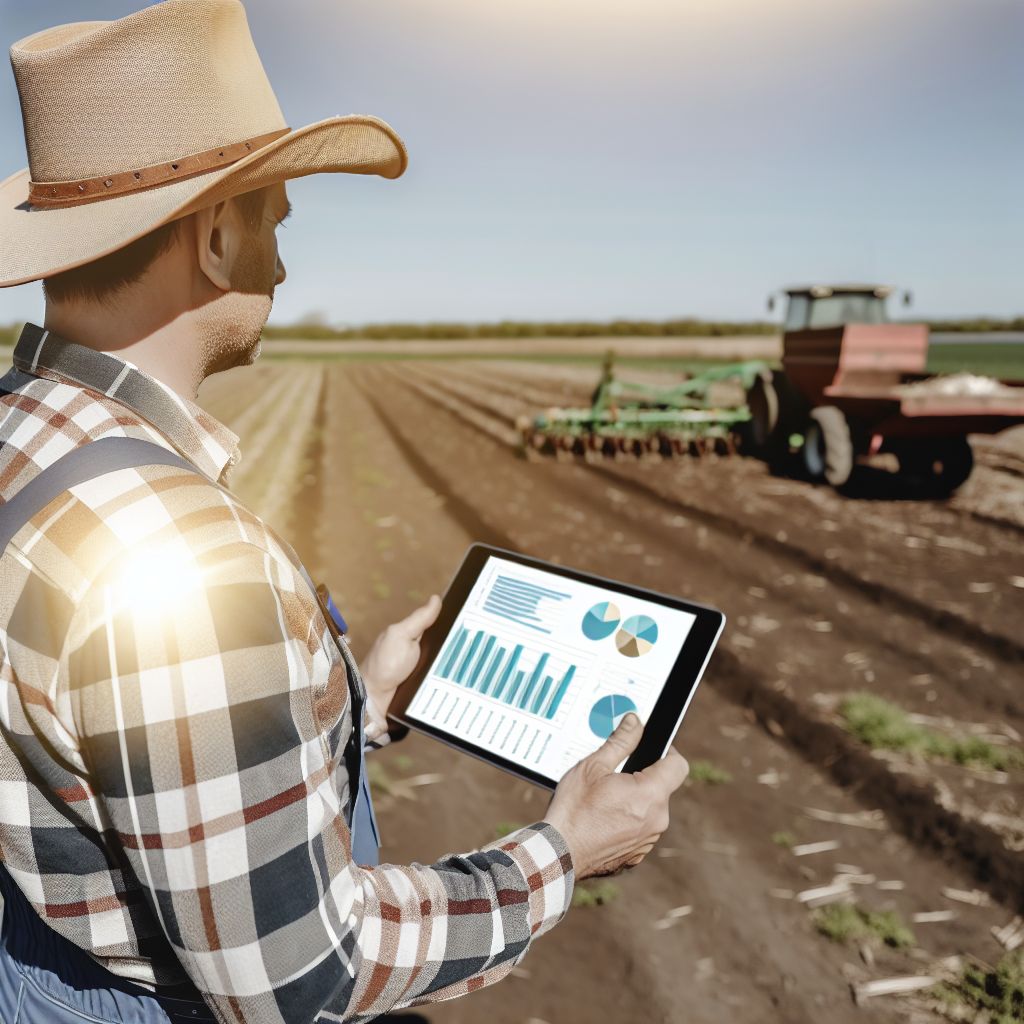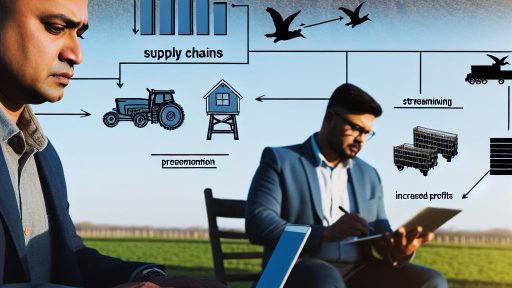Identifying Common Risks in Agriculture
Types of Risks
Agricultural operations face various risks that can impact performance.
These risks can be broadly categorized into environmental, economic, and operational aspects.
Environmental Risks
Weather conditions pose significant risks to agricultural output.
Floods, droughts, and storms can devastate crops.
Additionally, climate change introduces unpredictability to weather patterns.
Pests and diseases also threaten plant health and yield.
Farmers must remain vigilant to protect their investments.
Economic Risks
Market fluctuations can lead to price volatility for agricultural products.
Farmers may struggle with rising costs for seeds and equipment.
Access to credit can also be limited during economic downturns.
Trade policies and tariffs can introduce additional uncertainties.
Operational Risks
Operational risks include labor shortages and equipment failures.
These issues can disrupt planting and harvesting schedules.
Compliance with regulations adds another layer of complexity.
All these factors can impact overall yields and profitability.
Transform Your Agribusiness
Unlock your farm's potential with expert advice tailored to your needs. Get actionable steps that drive real results.
Get StartedMitigating Risks
Understanding and identifying risks is the first step towards management.
Farmers can adopt strategies to mitigate these risks effectively.
Insurance options, diversification, and technology can provide solutions.
Proper risk management leads to more stable agricultural operations.
The Role of Diversification in Risk Management
Understanding Diversification
Diversification involves spreading resources across various activities or products.
This strategy minimizes the impact of unforeseen events.
For instance, if one crop fails, others may still thrive.
Farmers can use diversification to manage both financial and environmental risks.
Types of Diversification Strategies
Farmers can implement several diversification strategies.
- Crop diversification entails planting different crops in the same season.
- Livestock integration combines animal husbandry with crop production.
- Value-added products enhance profitability by processing raw materials.
Each strategy offers unique benefits and challenges.
Benefits of Diversification
Diversification provides farmers with multiple income streams.
This stability helps weather market fluctuations.
Moreover, it enhances resilience against climatic changes.
Farmers can protect themselves from price volatility by diversifying.
Challenges of Diversification
Despite its benefits, diversification comes with challenges.
It requires additional knowledge and skills to manage different operations.
Furthermore, initial investments can be significant.
Farmers must carefully plan and assess their capabilities before diversifying.
Implementing Diversification in Agricultural Operations
To successfully implement diversification, farmers should start small.
Testing a new crop or livestock breed can provide valuable insights.
Additionally, seeking resources and training can enhance knowledge.
Collaboration with local agronomists can help tailor strategies to specific conditions.
Developing a Risk Management Plan for Farms
Identifying Risks
Farmers must start by identifying potential risks in their operations.
These risks can include natural disasters, pest infestations, and market fluctuations.
Showcase Your Farming Business
Publish your professional farming services profile on our blog for a one-time fee of $200 and reach a dedicated audience of farmers and agribusiness owners.
Publish Your ProfileAdditionally, understanding financial risks proves essential for sustainability.
Conducting thorough assessments helps pinpoint specific vulnerabilities.
Involving staff in this process fosters a culture of awareness and preparedness.
Assessing Risk Impact
Once risks are identified, evaluating their impact is crucial.
This evaluation typically considers both the likelihood and severity of each risk.
Farmers can use a risk matrix to categorize and prioritize risks effectively.
Higher likelihood and severity should take precedence in planning.
Collaboration with agricultural experts provides additional insights into risks.
Developing Mitigation Strategies
The next step involves formulating strategies to mitigate identified risks.
Farmers can adopt crop insurance to protect against financial losses.
Diversifying crop production reduces dependency on a single source of income.
Moreover, implementing integrated pest management can lower pest-related risks.
Periodic training for staff enables a quick response to emerging threats.
Monitoring and Review
Effective risk management requires continuous monitoring and review.
Establishing performance indicators helps track the success of mitigation strategies.
Regularly scheduled reviews allow farmers to adapt to changing circumstances.
Utilizing technology can enhance monitoring capabilities significantly.
Encouraging feedback from the team promotes ongoing improvement of practices.
Creating a Communication Plan
Clear communication is vital in a risk management plan.
Farmers should develop protocols for sharing information regarding risks.
Regular meetings foster a sense of shared responsibility among the team.
Utilizing technology can streamline communication efforts across the operation.
Providing updates ensures everyone remains informed about risk management efforts.
Find Out More: Creating Engaging Farm Tours To Enhance Visitor Experience
Utilizing Insurance Products to Mitigate Agricultural Risks
Introduction to Agricultural Insurance
Agricultural insurance is a crucial risk management tool for farmers.
It provides financial support during unforeseen events.
Farmers can protect their investments through various insurance products.
Types of Agricultural Insurance
Multiple types of insurance cater to specific agricultural risks.
These can include crop, livestock, and property insurance.
Each type focuses on different aspects of agricultural operations.
Crop Insurance
Crop insurance protects farmers against crop loss.
It covers losses due to natural disasters or market fluctuations.
This insurance is vital for maintaining financial stability.
Livestock Insurance
Livestock insurance offers protection for farm animals.
It safeguards farmers against the loss of livestock due to various risks.
Such risks may include disease outbreaks and accidents.
Property Insurance
Property insurance covers physical assets on the farm.
This includes buildings, machinery, and equipment.
It ensures that farmers can recover from property damage swiftly.
The Benefits of Using Insurance
Insurance provides peace of mind for farmers.
Showcase Your Farming Business
Publish your professional farming services profile on our blog for a one-time fee of $200 and reach a dedicated audience of farmers and agribusiness owners.
Publish Your ProfileIt allows them to operate without constant worry about potential losses.
Additionally, insurance can positively affect loan approvals.
Choosing the Right Insurance Coverage
Selecting the appropriate insurance coverage is essential.
Farmers should assess their specific risks before making a decision.
Consulting with an insurance advisor can provide valuable insights.
Agricultural Insurance as a Stability Tool
Agricultural insurance is key to cultivating a stable farming operation.
It mitigates risks and ensures sustainability in agriculture.
By leveraging insurance, farmers can focus on growth and productivity.
See Related Content: Data-Driven Strategies for Successful Agribusiness
The Importance of Technology in Risk Assessment and Management
Enhancing Data Collection
Technology significantly enhances data collection in agriculture.
Farmers can gather real-time data from various sources.
This data allows for informed decision-making.
Weather monitoring systems provide critical climate information.
Additionally, sensors help track soil moisture levels.
Utilizing Predictive Analytics
Predictive analytics play a vital role in risk management.
By analyzing historical data, farmers can identify trends.
These trends help in forecasting potential risks.
For instance, models can predict pest outbreaks.
Similarly, they can forecast yield fluctuations based on weather changes.
Implementing Advanced Tools
Various advanced tools are available to aid farmers.
Drones support crop monitoring and management from above.
They provide insights into crop health rapidly and efficiently.
Moreover, GPS technology allows for precise field mapping.
This precision reduces input waste and enhances productivity.
Improving Communication
Technology improves communication between stakeholders.
Farm management software enables real-time updates.
Farmers can communicate risks instantly to suppliers and buyers.
This seamless communication can mitigate potential losses.
Furthermore, it strengthens relations within the supply chain.
Facilitating Financial Management
Financial management tools help in risk assessment.
These tools provide insights into budget allocations.
Farmers can analyze the cost-benefit of different farming practices.
Additionally, they facilitate the comparison of insurance options.
This information is crucial for making strategic financial decisions.
You Might Also Like: Soil Health Management Practices for Sustainable Farming

Implementing Best Practices for Soil and Crop Management
Understanding Soil Health
Soil health is vital for sustainable agriculture operations.
Healthy soil enhances crop resilience and productivity.
Additionally, it supports water retention and reduces erosion.
Regular soil testing is essential to monitor its condition.
Farmers should analyze pH levels, nutrient availability, and organic matter.
Showcase Your Farming Business
Publish your professional farming services profile on our blog for a one-time fee of $200 and reach a dedicated audience of farmers and agribusiness owners.
Publish Your ProfileUtilizing Crop Rotation
Crop rotation improves soil fertility over time.
This practice breaks pest and disease cycles effectively.
It increases biodiversity on the farm, resulting in healthier ecosystems.
Farmers should plan rotations that include legumes and deep-rooted plants.
Each crop serves a distinct purpose for soil nourishment.
Adopting Cover Crops
Cover crops play a crucial role in soil protection.
They prevent erosion, improve soil structure, and enhance organic matter.
Farmers can choose species that fix nitrogen, such as clover.
These crops also suppress weeds and manage soil moisture levels.
Integrating cover crops into farming systems maximizes benefits.
Implementing Conservation Tillage
Conservation tillage reduces soil disturbance significantly.
This method helps maintain soil structure and moisture levels.
It promotes microbial activity and overall soil health.
Farmers should explore various tillage types based on their fields.
Reduced tillage systems can lead to sustainable farming practices.
Utilizing Precision Agriculture Techniques
Precision agriculture enhances decision-making in crop management.
It integrates technology to monitor field variability effectively.
Farmers can optimize input use, such as seed and fertilizer.
GPS and sensors assist in real-time data collection and analysis.
This approach increases crop yields while minimizing environmental impacts.
Focus on Integrated Pest Management
Integrated Pest Management (IPM) reduces reliance on chemicals.
This strategy combines biological, cultural, and chemical controls.
Farmers should identify pests accurately and monitor their populations.
Encouraging natural predators limits pest outbreaks sustainably.
Education on pest management practices is essential for effective implementation.
Delve into the Subject: Improving Crop Distribution with Effective Supply Chain Management
The Role of Financial Strategies in Stabilizing Operations
Understanding Financial Risk Management
Financial risk management helps safeguard agricultural businesses.
It identifies potential financial threats to operations.
Farmers can use various techniques to manage these risks.
Moreover, understanding cash flow is crucial for success.
Utilizing Budgeting Techniques
Budgeting is a fundamental financial strategy in agriculture.
A well-structured budget serves as a financial roadmap.
Regularly updating budgets allows farmers to adjust to changing conditions.
This adaptability enhances financial stability.
Diversifying Income Sources
Diversifying income sources mitigates risk.
It reduces dependence on a single crop or market.
Farmers can incorporate livestock, fruits, and vegetables into their operations.
This mix provides a buffer against market fluctuations.
Implementing Insurance Solutions
Insurance products are essential in risk management.
They protect against crop failures and natural disasters.
Showcase Your Farming Business
Publish your professional farming services profile on our blog for a one-time fee of $200 and reach a dedicated audience of farmers and agribusiness owners.
Publish Your ProfileFarmers should analyze various insurance options available.
Choosing the right policy can safeguard assets effectively.
Accessing Financial Education Resources
Financial literacy plays a critical role in effective risk management.
Farmers can seek workshops or online courses for better understanding.
Additionally, they can connect with local agricultural extension services.
These resources offer invaluable support for improving financial acumen.
Establishing Emergency Funds
Emergency funds provide a safety net for agricultural businesses.
These funds help cover unexpected expenses without disrupting operations.
Farmers should aim to save a portion of their profits for emergencies.
This proactive measure contributes to long-term stability.
Building Strong Relationships with Stakeholders and Support Networks
The Importance of Communication
Effective communication builds trust among stakeholders.
Sharing information fosters mutual understanding.
Regular updates keep everyone aligned with goals.
Additionally, open dialogue encourages feedback and support.
Identifying Key Stakeholders
Recognizing key stakeholders is crucial for success.
These may include farmers, suppliers, and consumers.
Moreover, integrating local communities enhances collaboration.
Engaging with policy-makers can influence agricultural policies.
Developing Collaborative Strategies
Collaboration strengthens networks and resource sharing.
Joint ventures can reduce costs and risks.
Partnering with research institutions enhances innovation.
Furthermore, creating cooperatives empowers farmers collectively.
Networking Through Community Engagement
Active participation in community events builds relationships.
Local fairs and markets provide excellent networking opportunities.
Engaging in discussions promotes shared values and objectives.
Collaboration with NGOs can enhance community trust.
Utilizing Technology for Connections
Technology improves stakeholder engagement through digital platforms.
Social media connects farmers with consumers directly.
Webinars and online forums create space for knowledge sharing.
Additionally, mobile apps can facilitate communication and coordination.
Additional Resources
Risk Management – Risk in Agriculture | Economic Research Service




